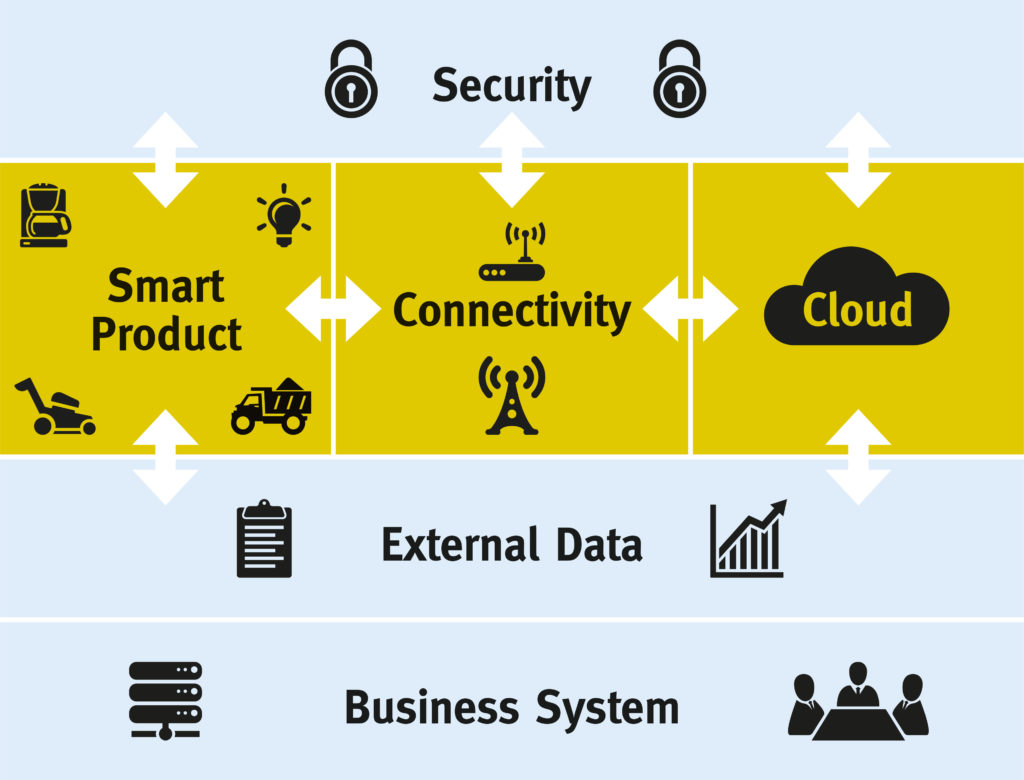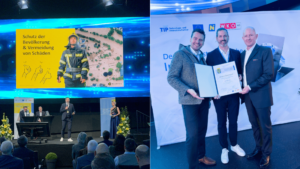The source for the following discussion is the figure “The new technology stack” in the article “How Smart, Connected Products Are Transforming Competition” by Porter & Heppelmann from the Harvard Business Review (November 2014).
The development of smart, connected products requires companies to do more than just modify the hardware and software of their existing products. Rather, a completely new technological infrastructure must be created and operated. This concerns the product itself, connectivity and the cloud (software running either on the manufacturer’s server or on those of a third party).

Components of intelligent, networked products
For the product this means an adaptation of both the hardware and the software. The existing electrical and mechanical components of the product must be complemented by sensors, microprocessors, data memories and interfaces for wired or wireless information exchange. The available computing power allows the use of embedded operating systems and enables the execution of the application directly on the product. This allows the design of extended user interfaces.
In terms of connectivity, creating the required technological infrastructure involves implementing the communication protocols for providing information exchange between the product and the cloud.
The cloud represents the sum of all functions and services that exist outside the physical product. For manufacturers, this means setting up and operating or acquiring an appropriate server infrastructure and maintaining the relevant services. The cloud covers a database for managing the data generated by the product, a platform for creating applications, a rules engine (e.g. for managing business rules) and an analysis platform as well as smart applications linked to the product which are executed on the manufacturer’s servers instead of directly in the product.
Security and infrastructure
Across these three levels (product, connectivity and cloud), structures for authenticating users and securing each level, a gateway for accessing external information sources and ways to integrate the data delivered by the smart, connected products into other business systems (e.g. ERP, CRM and PLM) must be created.
The development and maintenance of the technology stack that is indispensable for the use of smart, connected products, requires considerable investment and a broad spectrum of capabilities in areas such as software and system development, data analysis and online security. Since traditional manufacturing companies generally do not possess all of these skills to a sufficient degree, they are dependent on the support of technology suppliers in these areas.
Series: Moving into a new business era with smart, connected products
Part 1: Introduction
Part 2: The importance of business model innovation
Part 3: Laying the foundation through strategic decisions
Part 4: Breaking the valid industry logic
Part 5: 5 value stages of an IoT application
Part 6: Transforming the value chain
Part 7: The value generation of things in the Internet of Things
Part 8: Fundamental design of smart, connected products
Part 9: Requirements for the technological infrastructure in the Internet of Things
Part10: Creating added value by advancing to smart products


